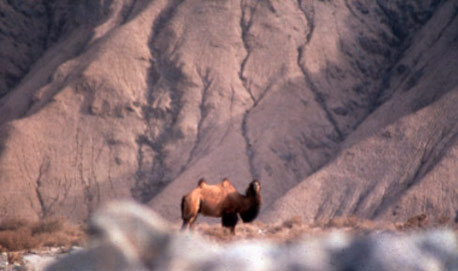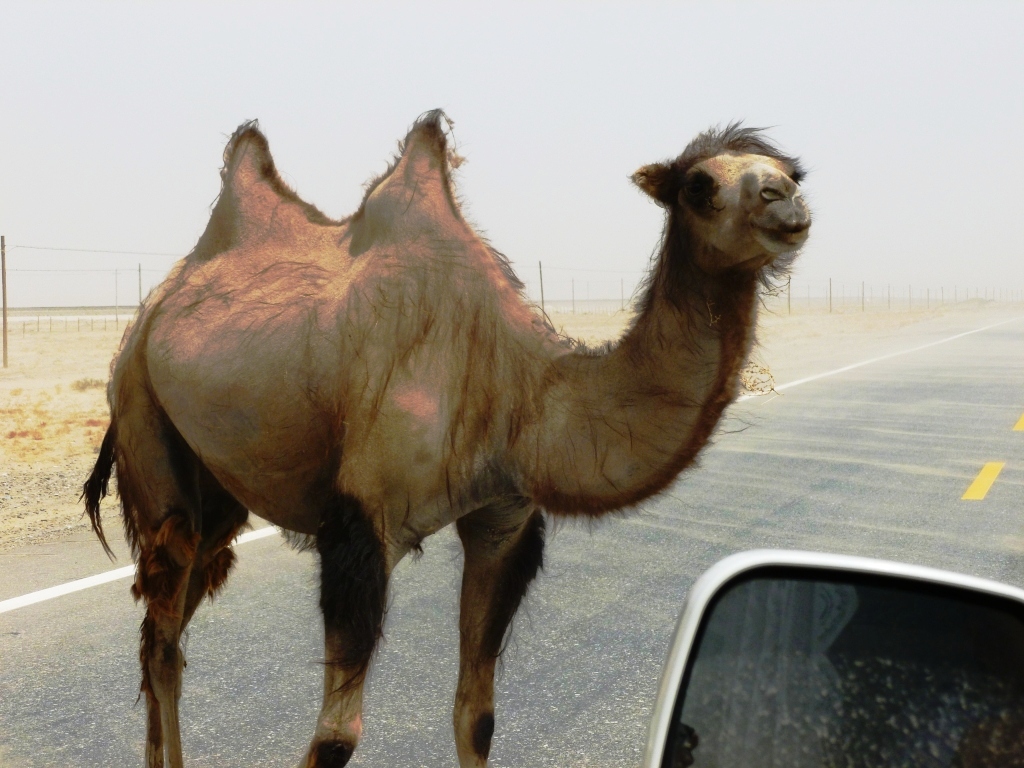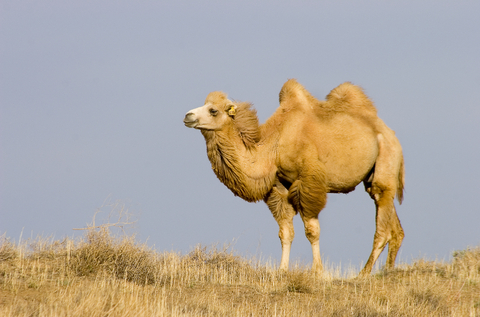This camel breed would be ideal for Somaliland/Somalia where drought has become a common occurrence.


The wild camel has managed to survive in an area of the Gobi in China, the Gashun Gobi (Lop Nur), which was for 25 years a nuclear test site. The wild camel survived the effects of radiation from 43 atmospheric nuclear tests and is breeding naturally. In the absence of fresh water, it had also adapted to drinking salt water with a higher salt content than sea water. Domestic Bactrian camels cannot drink salt water with this degree of salt.
Research to date does not show conclusively how the wild camel is absorbing and secreting the salt water. In China, young camels after suckling for two years, can adapt to drinking salt-water. It is this adaptability which enables them to survive in the Gashun Gobi. Wild camels migrate over huge distances in pursuit of unreliable salt water sources and meagre grazing. They can survive extremes of temperature varying from -40 Celsius to plus 55 Celsius. The WCPF believes that the wild camel can yield up secrets, which will be of great benefit to man.
Here is the catch, less than 1,000 Bactrian wild exist today waba endangered specie.
Domesticated Bactarian camel can not drink salt water however its larger than wild counterpart, can take as much punish as lanky Dromedary, provide more meat per head, dry feces can be used as energy source to sustain fire and even employed as working animals. They are in abundance +2 million of this breed exist today.
Importing some to Burco would be


The wild camel has managed to survive in an area of the Gobi in China, the Gashun Gobi (Lop Nur), which was for 25 years a nuclear test site. The wild camel survived the effects of radiation from 43 atmospheric nuclear tests and is breeding naturally. In the absence of fresh water, it had also adapted to drinking salt water with a higher salt content than sea water. Domestic Bactrian camels cannot drink salt water with this degree of salt.
Research to date does not show conclusively how the wild camel is absorbing and secreting the salt water. In China, young camels after suckling for two years, can adapt to drinking salt-water. It is this adaptability which enables them to survive in the Gashun Gobi. Wild camels migrate over huge distances in pursuit of unreliable salt water sources and meagre grazing. They can survive extremes of temperature varying from -40 Celsius to plus 55 Celsius. The WCPF believes that the wild camel can yield up secrets, which will be of great benefit to man.
Here is the catch, less than 1,000 Bactrian wild exist today waba endangered specie.

Domesticated Bactarian camel can not drink salt water however its larger than wild counterpart, can take as much punish as lanky Dromedary, provide more meat per head, dry feces can be used as energy source to sustain fire and even employed as working animals. They are in abundance +2 million of this breed exist today.
Importing some to Burco would be

Last edited:







 its a known FACT that tree's produce moisture to the sky creating rain clouds, where do u think rain comes from? trees also help full up ground water for wells, trees with deep roots also help prevent soil erosion
its a known FACT that tree's produce moisture to the sky creating rain clouds, where do u think rain comes from? trees also help full up ground water for wells, trees with deep roots also help prevent soil erosion  why do u think people promote tree planting to reverse climate change
why do u think people promote tree planting to reverse climate change



 #makesomaliagreenagain
#makesomaliagreenagain